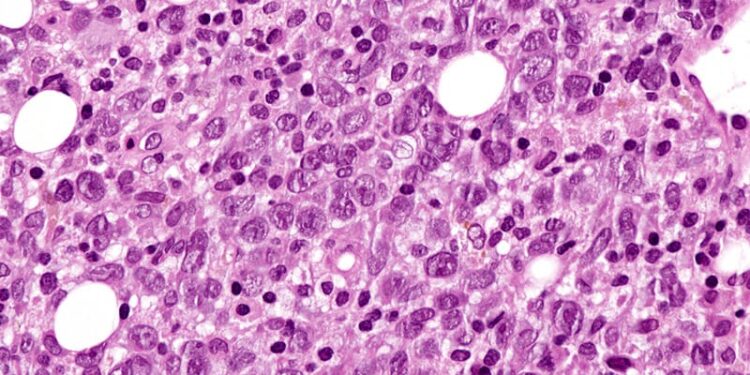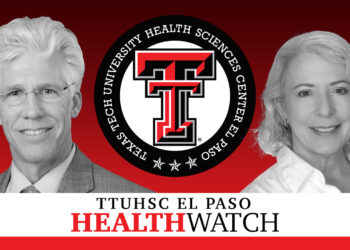LUGANO, Switzerland — The advent of the Pola-R-CHP (polatuzumab plus R-CHOP) regimen has shaken up the long-held standard of R-CHOP in the treatment of diffuse large B-cell lymphoma (DLBCL) and should now be the standard for all patients who meet the inclusion criteria of the landmark POLARIX trial that established its efficacy — according to one side of a debate on the issue held at the 18th International Conference on Malignant Lymphoma (ICML) 2025.
Conversely, the POLARIX trial had some notable caveats — including the lack of improvement in overall survival vs R-CHOP alone, and findings indicating that Pola-R-CHP benefits appear to favor patients with the activated B-cell (ABC)-like subtype — key limitations that suggest that R-CHOP is still “good enough” and the right choice for some patients, the counterargument concluded.
The phase 3 POLARIX trial moved to the center of the debate after becoming, in 2022, the first positive trial in 20 years to show benefit over the long-time standard of care of R-CHOP for treatment-naïve, high-risk patients with DLBCL.
The trial showed that polatuzumab vedotin, a CD79b-directed antibody-drug conjugate, added to R-CHOP provided an absolute improvement of 6.5% in progression-free survival (PFS) after 2 years compared with R-CHOP alone (76.7% vs 70.2%), and the improvements have been further reported to be sustained at 5 years (66.7% vs 58.1%).
“It should be emphasized that this was a randomized, double-blind, placebo-controlled, phase 3 international trial,” asserted Sonali M. Smith, MD, the Elwood V. Jensen professor of medicine and chief of the Section of Hematology and Oncology at the University of Chicago, Chicago, in making the case in favor of Pola-R-CHP as a new standard of care for all patients meeting POLARIX trial inclusion criteria.
“This is the gold standard of clinical trials. If we don’t listen to the gold standard, why are we even doing trials?” she emphasized.
Overall Survival vs PFS
Among the most prominent issues of debate is that despite the improvement in PFS, there was virtually no difference between Pola-R-CHP and R-CHOP in the trial in terms of overall survival (88.7% vs 88.6%).
Smith argued that over the course of the study’s follow-up period, the trajectories in each group do suggest a likely eventual greater improvement in survival with Pola-R-CHP.
“We start to see with follow-up that the curves continue to stay apart, and there is a suggestion perhaps that this may be permanent,” Smith noted. Supporting that, “there are numerically more deaths in the R-CHOP arm,” she added.
Smith cited important research derived from very large datasets of DLBCL in the Surrogate Endpoint for Aggressive Lymphoma Collaboration database concluding that 24 month PFS is indeed an indicator of excellent long-term survival.
“Patients treated with rituximab containing anthracycline-based immunochemotherapy on clinical trials who are alive without progression at 24 months from the onset of initial therapy [having] excellent outcomes with survival that is marginally lower but clinically indistinguishable from the age-, sex-, and country-matched background population for 7 years after achieving PFS [at 24 months],” the study concluded.
Those findings underscore that “PFS has now become an appropriate endpoint for the majority of trials that are designed,” Smith said.
Furthermore, with an “embarrassment of riches” in terms of new treatments in the relapsed/refractory DLBCL setting changing the treatment landscape, “I think showing an overall survival advantage is going to be exceedingly difficult, and it does not mean that PFS advantages are not meaningful.”
Counterpoint: PFS Difference ‘Quite Small’; Curves Separate Late
Making the counter-argument, Grzegorz (Greg) S. Nowakowski, MD, a professor of medicine and deputy director of the Mayo Clinic Comprehensive Cancer Center, in Rochester, Minnesota, noted first that the benefit of PFS overall in the POLARIX trial is “quite small” — in terms of the number needed to treat, the 6.5% PFS difference with Pola-R-CHP equates to about 15 patients needed to receive the therapy to prevent one relapse, he said.
Furthermore, the separation of the curves between Pola-R-CHP and R-CHOP occurs relatively late, he added.
“With R-CHOP alone, in multiple trials, we saw the separation of event-free survival or PFS curves occurring early,” Nowakowski said.
But vs Pola-R-CHP in the POLARIX trial, “the separation of these curves occurs relatively late, at 6 months, and by the time that happens, most of the patients who have primary refractory disease have already progressed,” he said.
Nowakowski noted research showing that patients with LBCL who relapse early or fail to achieve a complete response after frontline treatment have poor outcomes.
“We know in the clinic that the worst [outcomes] are among patients who progress early,” Nowakowski said.
ABC Subtype: ‘Elephant in the Room’ Lumbers in
Overall survival aside, another key finding from POLARIX was that some of the highest responses appear limited to key subgroups including older patients, those with nonbulky disease, and most notably, those with the ABC cell-of-origin subtype compared with the germinal center B-cell-like (GCB) subtype.
Smith argued that there is more to the story with that limitation as well.
“Other factors are important here — for example, older patients also had better responses — does that mean we should not offer this to younger patients who are otherwise eligible?” Additionally, “we know that ABC increases with age, which raises the question, is ABC a surrogate for older patients who happen to do better with this treatment?” Smith pondered.
Of note, only about a third of patients in the POLARIX study had the ABC subtype. However, 25% of the enrolled patients did not have any cell-of-origin that was assessed, and 15% could not be classified within one set or another, Smith said.
“So I think cell-of-origin is too blunt an instrument for us to consider as precision therapy.”
Subgroup Differences Cannot Be Ignored
Both speakers cited new data adding further complexity to the debate — a late-breaking subanalysis of POLARIX study, as reported by Medscape Medical News, showing that even within the ABC subgroup of patients, the majority of Pola-R-CHP benefit was limited to just one of five clusters, the C5, which is associated with poor outcomes.
The trial further showed “absolutely no difference [in responses] in the GCB subgroup, which, by the way, is more common than ABC,” Nowakowski noted.
As a result of the collective data, some centers have policies in place of only using Pola-R-CHP among patients with the ABC subtype or non-GCB subtypes, he said.
“They are mindful that there is no overall survival difference in POLARIX, and that the ABC and non-GCB are the subgroups who can truly benefit.”
Ultimately, Pola-R-CHP is clearly important — but still currently subject to too many caveats to be the standard of care for all, he argued.
“Right now, some centers are using it in all patients; some use it in some patients; some use it in ABC- or maybe non-GCB-defined patients only, as we do in our practice,” he said.
“And one could use it even more narrowly in the future based on these subtypes,” he added.
“I do think most of us would consider this an important option, but it is not a standard yet, and that is reflected by most of our regulatory agencies.”
An informal polling of the audience following the debate showed agreement heavily weighing in favor of Nowakowski’s argument — with an early separation of curves observed as the real-time display of voting results.
Smith’s disclosures included advisory or consulting relationships with Genmab, Regeneron, and Foresight Diagnostics. Nowakowski reported advisory or consulting relationships with Celgene, MorphoSys, and Genentech.
Source link : https://www.medscape.com/viewarticle/dlbcl-debate-pola-r-chp-suitable-standard-all-2025a1000i29?src=rss
Author :
Publish date : 2025-07-08 12:10:00
Copyright for syndicated content belongs to the linked Source.








